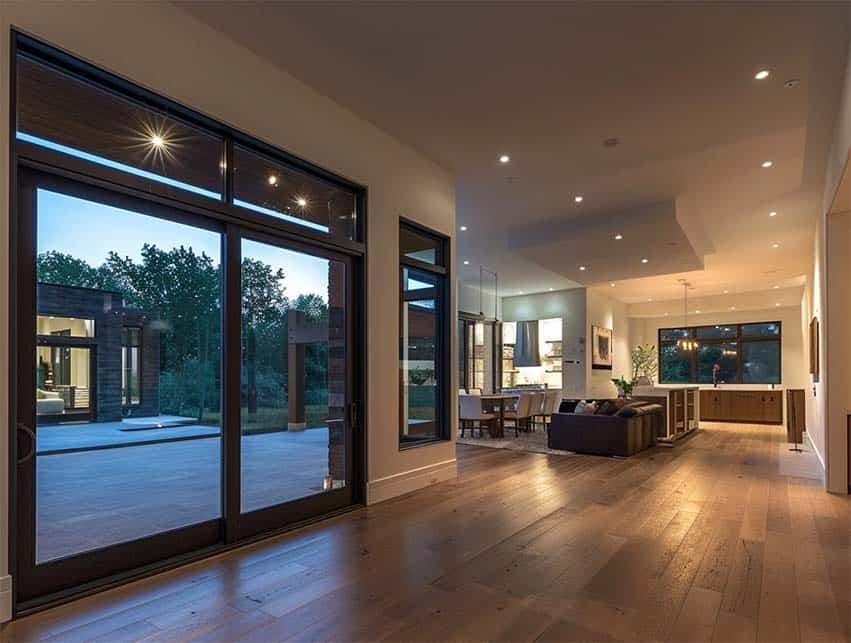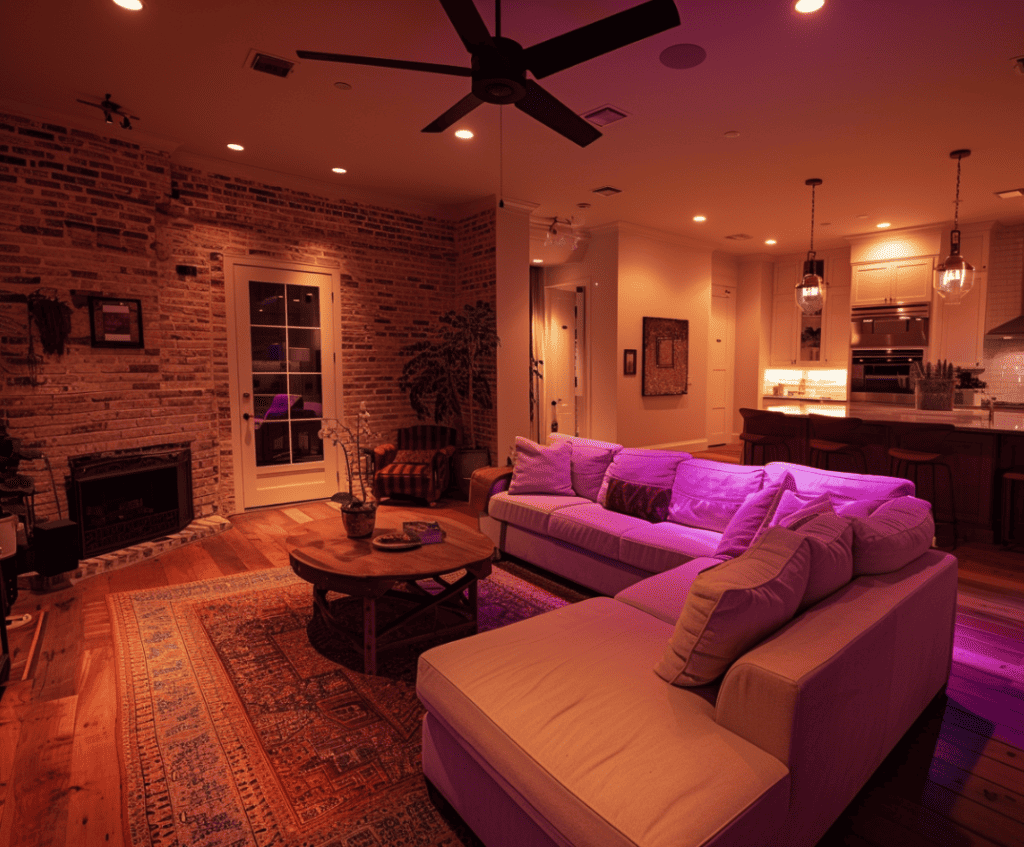10 Easy Ways to Save on Electricity

Skyrocketing power bill? Keep calm, start saving.
As residential electricians in San Antonio, TX, when clients call us to install or modify an electrical system in their home, we have to work to help them save on electricity costs. The weather in San Antonio is one of contrast: hot most of the year, a bit chilly during the winter months at around 38°F-40°F. So there are opportunities to economize on power both in summer and in winter.
We prepare this articles about 9 practical ways to reduce your electricity consumption without breaking the bank. These are small adjustments in your habits. They won’t impact your lifestyle in any major manner, and they won’t cost you an arm and a leg. Most of these tips come from our Grandmas, which means they have withstood the test of time, and are just common sense. Don’t expect a revelation… but hopefully you will find something new to learn.
Here we go, let’s save on electricity right now!
1. Leverage natural light
When you use natural light effectively, you enhance the energy efficiency of your home. During winter, open curtains and blinds during the warmest part of the day to allow the solar heat to increase the temperature of your room. But pull your curtains during the chillier hours to limit your energy loss through the windows. Even if you have good windows, the heat transfer from inside to outside will waste energy.
In summer, do the contrary: pull your curtains and use your blinds during the warmest part of the day to reduce the loss of cool air. Open your windows in the early morning to cool off your rooms without using your air conditioner. Our grandmothers knew this and there were no windows without curtains in their home.
According to the National Renewable Energy Laboratory, windows are a notorious source of energy loss in homes (study published under the title “Energy Performance of Windows”). By maximizing the use of solar heat, this energy loss can be counteracted, contributing to both environmental and economic benefits.
Another scientific study published in 2014 and widely cited in thermal insulation research is “Energy loss through windows: a significant factor in residential heat loss”. This paper emphasizes the importance of window design in minimizing energy loss and enhancing the energy efficiency of residential buildings. Its authors explore various window technologies and materials that can help in reducing energy loss.
2. Work your thermostat
Set your thermostat to a comfortable but higher temperature in the summer and a lower temperature in the winter.
Adjusting your thermostat throughout the year is in itself a practical energy conservation strategy. Lower the temperature when nobody is home, and right before you go to sleep. You will make significant energy savings. In winter set the target temperature lower so that you don’t trigger your air conditioner all the time.
It is remarkable that the average American household keeps their home about 5°F-6°F cooler in summer than the average Western European household. The difference is a matter of habit: Europeans don’t use air conditioning nearly as much as Americans, preferring to regulate their indoor temperature with curtains and opening/closing of their windows.
The use of HVAC is a big factor in the overall energy expense of a U.S. household. This is confirmed by multiple governmental and private research studies, including a paper published by Luis Pérez-Lombard, José Ortiz, and Christine Pout, titled buildings contribute significantly to global energy consumption.
3. Turn off space heaters
Use space heaters in the rooms you are using to avoid heating the entire house. Make a habit to turn them off whenever you leave a room to save on electricity.
Many households use space heaters to get warmer during winter. But these devices are not energy-efficient, and they can be even more wasteful if you operate them in empty rooms.
It may sound silly to say, “turn your heater off when you leave the room” but our grandmothers were absolute champions are chasing waste, and they certainly did not allow a heater to warm up an empty room. Being residential electricians we work in people’s homes all the time. We can’t tell you how often we seen our customers leave a room and forget their electric heater is still on.
These devices are not equipped with presence sensors; they definitely won’t detect that you left the room. So, make a habit of systematically turning them off even if you leave the room just to brew yourself a coffee, because… although you intend to return to this room, chances are you will get distracted or just suddenly have something to do elsewhere. And when you finally return, it’s been 20 minutes. You have heated an empty space for 20 minutes and run up your electricity bill.
A research paper by Lon E. Bell titled “Cooling, Heating, Generating Power, and Recovering Waste Heat with Thermoelectric Systems” discusses the potential of thermoelectric systems in converting waste heat into electricity. The author highlights the importance of efficient energy use and management in heating and cooling systems. The principles he outlined in his paper emphasize the significance of optimizing the operation of heating devices, such as space heaters, to enhance energy efficiency and sustainability.
4. Opt for LED lights
Replace incandescent bulbs or CFL light bulbs with energy-efficient LED lights. Beside using less electricity, they also have a longer lifespan. You kill two birds with a stone.
LEDs are known for their longevity and low-energy consumption compared to traditional incandescent or fluorescent bulbs. Remember the labels on LED light packaging? 10 W = 100 W! Opting for energy-efficient LED bulbs generates immediate energy savings, particularly during winter when daylight is limited.
And as we show in another article on the topic of LED lighting, the average lifespan of an LED light is 25,000 hours (50,000 for the best ones) vs. 1,000-2,000 hours for an incandescent bulb. You will have to replace your traditional bulbs at least once a year, whereas your LED lights will call for replacement on average every 2.7 years. Figure out your savings.
Research study
A study titled “Solid-State Light Sources Getting Smart” by E. Fred Schubert and Jong Kyu Kim discusses the revolutionary impact of solid-state light sources, including LEDs, in various applications. The study highlights the inherent efficiency of these light sources and their potential for energy savings. It also emphasizes the controllability features of LEDs, such as spectral power distribution and temporal light modulation, which offer additional benefits beyond energy efficiency.
3 ways to go to switch to LED lighting
There are several levels in ways to achieve energy savings using LEDS: you can replace your traditional light bulbs with LED bulbs. This is an easy and inexpensive DIY remedy. You can also ask for a licensed electrician like All Star Electric to design a system for one or several rooms that will use every opportunity to save on electricity costs using low-voltage fixtures, dimmers, sensors, etc.
The last and most expensive option is to ask the electrical contractor to redesign your entire home electrical system to achieve both aesthetic goals, ultra-convenience (iOT, automation), and energy savings. If you want to start on a project like this, don’t hesitate to call us.
5. Seal the leaks!
Seal any gaps or leaks in doors and windows with weatherstripping or caulk to prevent air loss through openings, and to improve the efficiency of your heating and cooling systems.
In a study titled “Household actions can provide a behavioral wedge to rapidly reduce US carbon emissions”, researchers listed 17 types of action with the potential to reduce significantly the energy consumption of a household without incurring any significant cost or lifestyle changes.
The researchers assigned these 17 actions to 5 categories, including “home weatherization”. This category groups “attic insulation, sealing drafts, and installing high-efficiency windows”.
Their study shows that outside of owning more energy–efficient vehicles, driving more responsibly, and car pooling, weatherization would be the single most efficient action that households could take to reduce carbon emissions in the U.S. Carbon emissions are directly related to energy consumption. Weatherization would be twice as efficient in this regard as replacing the HVAC system of a home.
6. Unplug your devices at night
Unplug electronics and appliances when you don’t use them. Even when turned off, many devices continue to draw power!
Many electronic devices and appliances continue to draw power even when switched off, a phenomenon known as ‘phantom load’ or ‘standby power.’ The cumulative effect of this residual energy results in unnecessary energy waste and increased electricity bills.
To mitigate the impact of phantom loads, use power strips: disconnect multiple devices with a single switch. Advanced power strips with built-in timers and occupancy sensors automate the disconnection process. If you operate critical devices that require constant power (e.g. home medical equipment), plg them on dedicated outlets to avoid accidental disconnection.
Research study
Researchers Jack Kelly and William J. Knottenbelt published a study titled “The UK-DALE dataset, domestic appliance-level electricity demand and whole-house demand from five UK homes“. It provides valuable insights into household energy consumption patterns. According to research, consumers are more likely to improve their energy efficiency when provided with itemized, appliance-by-appliance consumption information. Though the study focuses on the broader aspects of household energy use, we can apply its principles to the issue of phantom loads from unplugged devices.
7. Purchase energy-efficient appliances
When it is time to replace an appliance, opt for a model that is more energy-efficient than the old one. Look for the ENERGY STAR label that ensures it meets the energy efficiency guidelines set by the U.S. Environmental Protection Agency, and select one based on its Energy Guide label rating.

According to the study we cited earlier, “Household actions can provide a behavioral wedge to rapidly reduce US carbon emissions”, the adoption and use of available technologies in U.S. homes have the potential to save an estimated 123 million metric tons of carbon per year in year 10.
Energy-efficient appliances (ENERGY STAR-certified refrigerators, washing machines, and dishwashers) will help you save on electricity significantly over time. For instance, an ENERGY STAR-certified refrigerator uses 15% less energy than non-certified models. Similarly, energy-efficient washing machines use about 25% less energy and 33% less water than non-certified washers.
Use manufacturers’ planned obsolescence to favor those that contribute the most to protecting the environment.
8. Space out your washing loads
Wash full loads of clothes and dishes to maximize the efficiency of your washing machine and dishwasher. Use cold water for laundry whenever possible. Avoid handwashing dishes.
Our using washing machines to clean half-loads is a fairly new phenomenon. If you look at old washer models, you will see that they did not have a half-load or light-load setting. That’s because our parents and grand-parents waited till the hampers were full to start a new wash. The reason was not that they had less kids; a typical family in the 60s had more children than a modern family. They were just more conscious than us of the need to be frugal and save on electricity.
Optimizing washing loads reduces energy consumption. We did a basic calculation.
Electricity savings calculations
According to Energy Star, a mid-range dishwasher consumes approximately 1.5 kWh per load, while a washing machine uses around 1 kWh per load. In San Antonio, TX, the average cost of electricity is about $0.11 per kWh.
For a household of four persons (two adults, two children), washing dishes and clothes once daily (1 load of clothes, 1 load of dishes) every day of the week would result in the following energy consumption:
- Dishwasher: 1.5 kWh/load x 7 days = 10.5 kWh/week
- Washing Machine: 1 kWh/load x 7 days = 7 kWh/week
- Total Weekly Consumption: 17.5 kWh
- Total Weekly Cost: 17.5 kWh x $0.11 = $1.92
Let’s calculate the energy consumption if we would reduce the frequency to twice a week:
- Dishwasher: 1.5 kWh/load x 2 days = 3 kWh/week
- Washing Machine: 1 kWh/load x 2 days = 2 kWh/week
- Total Weekly Consumption: 5 kWh
- Total Weekly Cost: 5 kWh x $0.11 = $0.55
Potential savings:
- Weekly: $1.925 – $0.55 = $1.375
- Monthly: $1.375 x 4 = $5.5
- Annually: $5.5 x 12 = $66.0
It may not seem like much but… costs accumulate across the parts of a households, and the total makes a difference in a family budget. As our grandmothers would say, “Any savings is good savings“.
And as to the last point, avoiding washing dishes by hand, its has been demonstrated over and over that we use much more hot water (and therefore electricity to heat up the water) than dishwashers.
We build a small calculator that will give you an idea of what savings you could expect if you would make small changes in your lifestyle when using your dishwasher and your washing machine.
Energy Savings Calculator
Average power usage per load of a dishwasher: 1.5 kWh (fixed)
Average power usage per load of a washing machine: 1 kWh (fixed)
9. Be smart about water heating
Water heating accounts for a portion of household energy consumption. How can we save on electricity by being smarter about the way we heat up water?
Think of how you mix cold water with hot water in your shower and when you wash dishes in the sink. Do you have to dial down the flow of hot water to avoid scalding yourself? Why not decrease the temperature at which you set your water heater?
According to Energy Star, a mid-range water heater consumes approximately 4,000 kWh per year. In San Antonio, TX, we have seen that the average cost of electricity was about $0.11 per kWh.
Savings calculation
For a household of four persons (two adults, two children), raising the temperature of city water from an average level to 95°F typically consumes around 1.5 kWh. Therefore, heating water to 95°F daily would result in a weekly energy consumption of 10.5 kWh, or a cost of $1.155 per week.
Let’s imagine that we reduce our hot water temperature setting to 80°F. The energy required would be approximately 1 kWh. This translates to a weekly energy consumption of 7 kWh, or a cost of $0.77 per week.
Our weekly savings would be $0.38, monthly savings would be $1.54, and annual savings would be $18.48.
We built this second simple calculator to help you figure out how much money you could save monthly and yearly if you were to dial down the temperature setting of your water heater.
Water Heating Savings Calculator
Number of days per month: 30 (fixed)
Volume of water in a bathtub when full: 50 gallons (fixed)
Flow rate of a showerhead: 2.5 gpm (fixed)
Water consumption per dishwasher load: 4.2 gallons (fixed)
Volume of water used per washing machine load: 18 gallons (fixed)
10. Practice Energy-Efficient Landscaping
Plant shade trees and shrubs around your home to provide natural insulation and reduce the need for air conditioning.
Direct exposure to sun and wind increase the need for air conditioning. Strategically placed trees will provide shade and act as windbreaks. Plant deciduous trees on the south and west sides of your property. They will project their shade in the summer and allow for sunlight penetration in the winter as they lose their leaves.
The distance of these trees from your home will have to be judiciously evaluated, especially if you have solar panels on your roof. But even when installed away from your home, they will help break your exposure to wind, and that will definitely make a change on the number of times your air conditioner cycles all year long. Likewise, tall hedges around your walls will lower your wind exposure and its direct heating or cooling impact on your indoor temperature.
If your home has a crawl space, airflow and insulation beneath the structure are two important factors to consider when planting. Most crawl spaces are not equipped with any type of insulation except basic fiberglass (insufficient). This common issue results in a greater need for air conditioning as the temperature of the crawl space varies depending on the season.
If it is not in your plans to insulate your crawl space, then plant around your home. Ground covers like Asiatic Jasmine will help maintain a cooler environment in the crawl space. Shrubs will also break wind drafts and keep the temperature under your home more stable throughout the year. Using mulch around your foundations will also act as an insulator.
How else can All Star Electric help you?
All Star Electric and its team of licensed residential electricians work on all types of electrical projects in the San Antonio region. In business for almost 30 years, we have been helping homeowners and business owners reduce their usage of electricity by redesigning electrical installations from the ground up, as well as by modifying subsystems to achieve better energy efficiency.
We do electrical inspections to ensure your home or business is up to code. If your electrical installation is faulty, it is a source of risk that can expose your family and business to devastating consequences. An electrical inspection will either reassure you as to the nature of your installation, or point to zones of concern that can then be remedied before a catastrophe happens.
If you have an electric vehicle, call us to discuss the upsides and downsides of installing a charging station in your home. As a Tesla certified installer, we can install Level 1 and Level 2 EV chargers in your garage or carport.
If you have any electrical project in mind, call us at (210) 391-0274. We offer reasonable rates, and very high quality workmanship as attested by our A+ rating with the San Antonio BBB. As a matter of fact, we have maintained our A+ with 0 complaints since we became members in 2009. We are also members in good standing of the San Antonio Chamber of Commerce. You will find our business in the San Antonio electrical contractors section.
Additional resources
We researched thoroughly the facts and figures presented in this article. Things can change as new technology develops, so the figures can change. But we firmly believe they are currently accurate.
Here is a link to a full FAQ we wrote about LED lighting




























